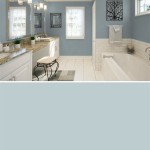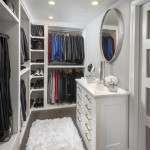Average Cost to Add a Half Bathroom: A Comprehensive Guide
Adding a half bathroom, also known as a powder room, can significantly enhance a home's value and convenience. Whether for guests or to alleviate pressure on existing full bathrooms, a half bath offers a functional and often aesthetically pleasing addition to any living space. However, understanding the costs involved is crucial for effective budgeting and project planning. The price to add a half bathroom can vary widely based on several factors, ranging from location and plumbing requirements to material choices and labor costs. This article provides a detailed overview of the average costs associated with adding a half bathroom, breaking down the various expense categories and influencing considerations.
The average cost to add a half bathroom typically falls within a range of $5,000 to $15,000. This is a broad estimate, and the final cost can easily deviate from this range depending on the specifics of the project. A very basic, no-frills half bath in an easily accessible location might come in closer to the lower end of the scale, while a larger, more luxurious half bath with complex plumbing and high-end finishes could easily exceed the upper limit.
Key Cost Factors: Plumbing and Location
One of the most significant cost drivers when adding a half bathroom is plumbing. The closer the new bathroom is to existing plumbing lines, the lower the plumbing costs will generally be. If the new half bath is located far from the main plumbing stack, the plumber will need to run new supply and drain lines, which can involve opening walls, floors, and ceilings. This can significantly increase both the labor and material costs associated with the project.
The ease of access to the plumbing also affects the scope of the work. For instance, if the bathroom is to be installed in a basement with accessible plumbing, the costs will likely be lower compared to installing it on an upper floor where plumbing lines may need to be routed through multiple levels. Furthermore, the type of existing plumbing pipes can also influence the cost. Older homes with outdated or corroded pipes may require plumbing upgrades alongside the new bathroom installation. This preemptive replacement can prevent future plumbing issues but will add to the overall project expenses.
Beyond the distance to existing plumbing, the complexity of the plumbing installation itself also matters. Rerouting existing pipes, particularly if load-bearing walls or structural elements are involved, requires specialized expertise and can add significant costs. Obtaining the necessary permits for plumbing work is also essential, and these permit fees should be factored into the budget. These fees vary by municipality and may include inspection costs to ensure the plumbing work complies with local building codes.
Furthermore, if the existing water pressure is insufficient for the new fixture, a booster pump might be needed, adding an unanticipated expense. Properly scoping out the plumbing needs and obtaining accurate estimates from qualified plumbers is essential to avoiding budgetary surprises during the project.
Material Costs: Fixtures, Finishes, and More
The selection of fixtures and finishes significantly contributes to the overall cost of a half bathroom. The price range for essential fixtures such as toilets, sinks, and faucets can vary greatly based on brand, style, and features. A basic, standard toilet might start around $100, while a high-end, water-efficient model with advanced features could cost several hundreds or even thousands of dollars. Similarly, sink options range from simple pedestal sinks priced under $100 to custom-designed countertop sinks that can easily exceed $500.
Faucets also offer a wide range of price points, influenced by factors like material, finish, and brand reputation. Chrome faucets are typically more affordable, while brushed nickel, oil-rubbed bronze, or custom finishes will generally command higher prices. The choice of countertops also significantly impacts the material cost. Laminate countertops are the most budget-friendly option, while solid surface materials like granite, quartz, or marble will significantly increase overall expenses.
Other material expenses include flooring, wall coverings, lighting, and ventilation. Tile flooring is a popular choice for bathrooms due to its durability and water resistance, but the cost varies based on the type of tile (ceramic, porcelain, stone), size, and installation complexity. Wall coverings can range from paint to wallpaper to tile, each with distinct costs and installation requirements. Lighting is essential for functionality and aesthetics, and the choice of lighting fixtures, including recessed lighting, vanity lights, and accent lighting, can significantly impact the budget.
Proper ventilation is crucial in a bathroom to prevent moisture buildup and mold growth. A ventilation fan is a necessary addition and should be chosen based on the size of the bathroom and local building codes. The cost of the fan itself can vary depending on its features, such as noise level and humidity sensors, and installation costs will also factor into the material and labor budget.
Finally, consider the cost of drywall, lumber, and other construction materials needed to build the walls and frame the space. These costs will vary depending on the size and complexity of the bathroom layout and the quality of the materials used.
Labor Costs: Hiring Professionals
Labor costs represent a significant portion of the total expense of adding a half bathroom. This includes the cost of hiring contractors for plumbing, electrical work, carpentry, drywall installation, tiling, painting, and other necessary tasks. The rates charged by contractors can vary based on their experience, location, and the complexity of the project.
Plumbers typically charge hourly rates, and the cost will depend on the extent of the plumbing work required. Electrical work should always be performed by a licensed electrician to ensure safety and compliance with building codes. This includes wiring for lighting, outlets, and the ventilation fan. Carpenters may be needed to frame the bathroom, install doors and trim, and build custom cabinetry. Drywall installation involves hanging and finishing the drywall, which requires expertise to attain a smooth, paint-ready surface.
Tiling, whether for the floor or walls, is a skilled trade that requires precision and attention to detail. The cost of tiling will depend on the type of tile, the size of the area, and the complexity of the pattern. Painting or applying other wall coverings requires preparation and proper application techniques to achieve a professional finish. In some cases, a general contractor might be hired to oversee the entire project, coordinating the work of various subcontractors and managing the schedule. While hiring a general contractor adds to the overall labor costs, it can simplify the project management process and ensure that all aspects of the project are completed to a high standard.
It is important to obtain multiple bids from different contractors to compare prices and ensure that the estimates are comprehensive and accurate. A detailed contract should be signed before work begins, outlining the scope of work, payment schedule, and any warranties or guarantees.
Consider the potential need for demolition work if an existing space needs to be reconfigured. This adds to the labor time and may involve disposal fees for the removed materials.
The importance of hiring qualified and experienced professionals cannot be overstated. While DIY projects may seem like a cost-saving option, improper installation can lead to costly repairs and safety hazards. Licensing and insurance are critical considerations when selecting contractors. Licensing ensures that the contractor has met certain qualifications and is authorized to perform the work, while insurance protects the homeowner from liability in case of accidents or damages during the project.
Unexpected issues can arise during the renovation process, such as finding hidden plumbing or electrical problems, uncovering structural issues that require repair, or encountering unforeseen delays. It is advisable to set aside a contingency fund, typically around 10-15% of the total budget, to cover these unexpected expenses.
In summary, adding a half bathroom involves a variety of costs, including plumbing, materials, and labor. Careful planning, detailed budgeting, and the selection of qualified professionals are essential for ensuring a successful and cost-effective project. Obtaining multiple bids, considering all cost factors, and setting aside a contingency fund can help homeowners stay within budget and avoid costly surprises during the renovation process.

What Is The Cost To Add A Half Bathroom In 2025 Badeloft

What Is The Cost To Add A Half Bathroom In 2025 Badeloft

How Much Does A Small Bathroom Remodel Cost 2025

How Much Does It Cost To Add A Half Bathroom 2025 Guide

What S The Average Cost To Add A Bathroom Neighborly

Half Bathroom To Full Conversion Costs Permits Designs

Cost To Add A Basement Bathroom Bright Green Door

2025 Small Bathroom Remodel Costs Budgeting Tips Types

How Much Does A Small Bathroom Remodel Cost 2025

Half Bath A Small Bathroom Remodel On Budget
See Also







